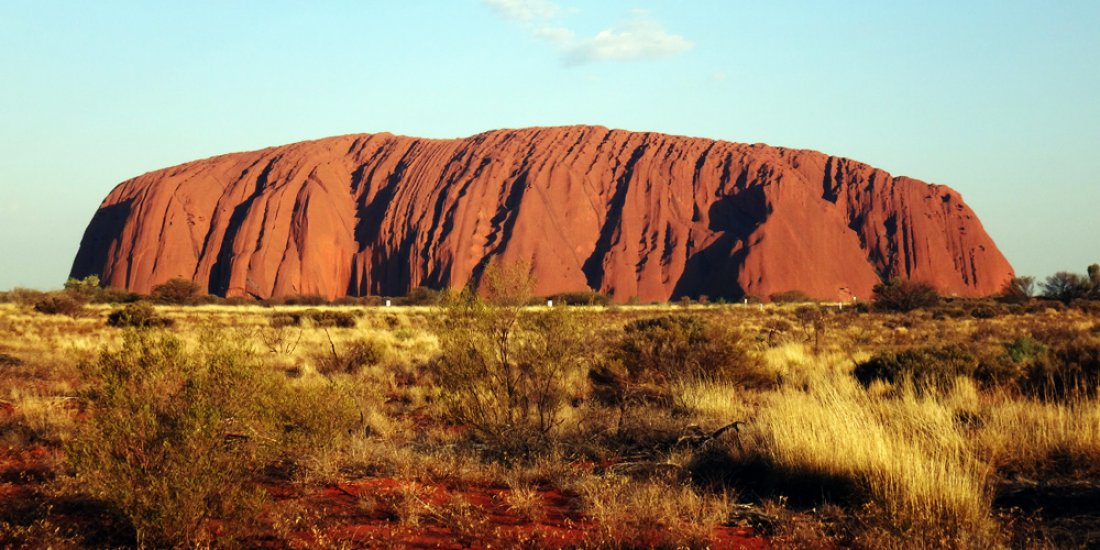Ten natural wonders of Australia
 Photo By: Sue Hile
Photo By: Sue Hile Australia is a country that contains some of the most beautiful and awe-inspiring natural wonders in the world. Sure, Sydney, Melbourne and Perth are great cities, but if you’re flying to Australia any time soon, chances are you’re going for the country’s natural attractions. Here are ten of the best.
The Great Barrier Reef, Queensland
One of the largest reefs in the world, the Great Barrier Reef actually consists of approximately 3400 individual reefs stretched along the coast of Queensland.
It is over 2500 kilometres long and actually reaches the coast of Papua New Guinea. The wide diversity of marine life found on and around the reefs provides an incredible experience for divers and snorkelers.
Shark Bay, Gasgoyne Region, Western Australia
Shark Bay is located on the west coast of Australia and covers around 2.2 million hectares. Two peninsulas adjoin to form the bay, which is a popular but still unspoilt tourist destination.
The spectacular mix of scenery and the animals and plants in the area attracts visitors all year round due to the mild weather in the winter months and the hot summers.
Twelve Apostles, Victoria
Located 275 kilometres west of Melbourne, the Twelve Apostles form one of the most famous attractions in Australia. They appear as though they are emerging gracefully from the Southern Ocean.
The stacks of limestone rock were once caves eroded away from the cliffs. They then became arches and the arches became the vertical structures seen today. The Twelve Apostles remains popular amongst holidaymakers taking a trip along the Great Ocean Road.
The Painted Desert, South Australia
The Painted Desert is over 80 million years old. Its hills ebb and flow and the mixture of rock types resemble a paint box because of their deep brown, oxide red and yellow ochre shades.
This phenomenon is best viewed by air and in direct sunlight as it brings out the spectacular colours.
The Lost City, Northern Territory
Located in the Northern Territory, the Lost City is actually a series of rock formations resembling a long-lost civilisation. Years of erosion hollowed them out and smoothed them over. Some say the structures resemble statues and buildings and although they look man made, they most definitely are not.
Horizontal Waterfall, Kimberley Region, Western Australia
Located in Talbot Bay, the phenomenon is a result of mass tidal movements from the Buccaneer Archipelago which are trapped behind the rock walls.
The water forcing itself through the narrow passageway between the cliffs creates the effect of a horizontal waterfall. The phenomenon can be experienced from the air or there are motorboat tours along the falls.
Burning Mountain, New South Wales
The smoke emanating from the mountain is caused by an underground smouldering coal seam and is not volcanic. It is thought to be approximately 6000 years old and the coal seam moves one metre a year.
The heat is so great that the rocks cannot be walked upon, even with shoes on. Burning Mountain can be seen from the elevated walkway which runs through it.
Wolf Creek Crater, Western Australia
The creation of natural wonders doesn't have to come from the Earth. The second-largest crater in the world was formed when a meteorite crashed down from space around 300,000 years ago.
Lying on the edge of the Great Sandy Desert in East Kimberley, the crater is 60 metres deep and 880 metres wide.
The Pinnacles, Western Australia
These naturally occurring limestone formations are located in Nambung National Park in Western Australia. August to October is the best time to go and see the Pinnacles as the light brings out the magnificent colours and the spring flowers begin to bloom.
Uluru (Ayers Rock), Northern Territory
Ayers Rock is one of the most famous natural phenomena in Australia. It is particularly beautiful in the summer months when the vibrant red sandstone can be seen from miles away. As the locals believe it has spiritual significance, they prefer you not to climb the rock but there is a climbing rail attached for those wanting to scale the rock, there are also guided tours around it.

Gaz Morris

